

 marcopolo@chinatoursnet.com
marcopolo@chinatoursnet.com
Home / Henan Travel Guide/ Attraction
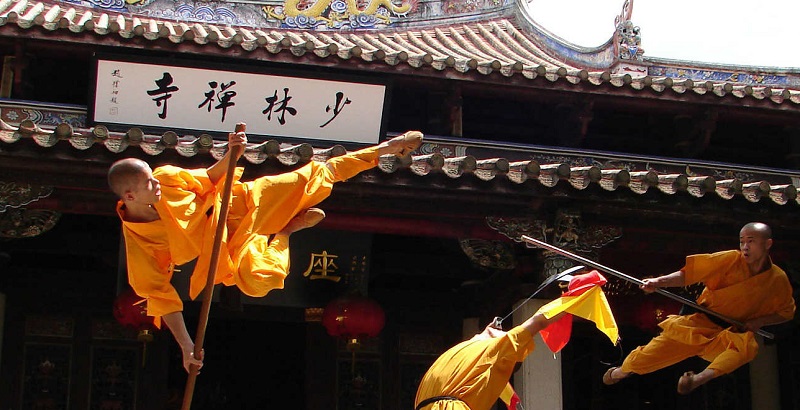
Shaolin Monastery
.png)
.png)
Shaolin Monastery
.png) Tour Code : C1741
Tour Code : C1741
.png) Type : Historic sites
Type : Historic sites
.png) City / Province : Henan(Longmen、Shaolin)
City / Province : Henan(Longmen、Shaolin)
.png) Built in : 495.BC
Built in : 495.BC
Shaolin Monastery
Shaolin Monastery or Shaolin Temple (Chinese: 少林寺; pinyin: shao lin si) is a Buddhist temple in Dengfeng county, Zhengzhou, Henan province, China. The temple is situated in a forest (林; lin) of Shaoshi (少室; shao shi) mountain, one of the seven peaks of Song mountains (嵩山; song shan). Hence the temple has been named Shaolin. It is 1500 years old now. Shaolin is the birthplace of dhyana (Zen) Buddhism. It is one of the four holy Buddhist temples of China. Shaolin is also allegedly the first establishment that institutionalized kung fu. Because of its association with Shaolin Kung Fu and contributions in development of other Chinese martial arts, it is considered the cradle of kung fu. So that the Chinese saying goes: "All martial arts under heaven arose out of Shaolin."Shaolin Monastery and its Pagoda Forest were inscribed as a UNESCO World Heritage Site in 2010 as part of the "Historic Monuments of Dengfen.
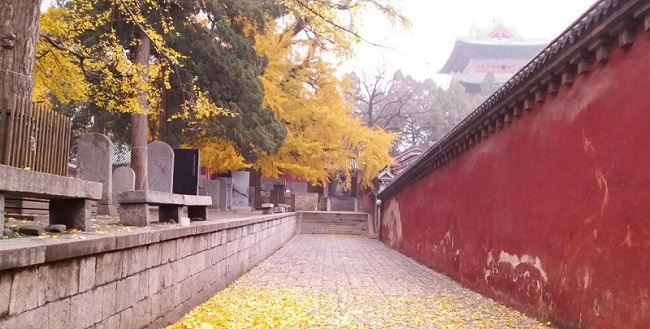
History
Establishment
The first Shaolin Monastery abbot was Batuo (also called Fotuo or Buddhabhadra) a dhyana master who came to China from India in 464 AD or from Greco-Buddhist Central Asia to spread Buddhist teachings.
According to the Continued Biographies of Eminent Monks (645 AD) by Daoxuan, Shaolin Monastery was built on the north side of Shaoshi, the central peak of Mount Song, one of the Sacred Mountains of China, by Emperor Xiaowen of the Northern Wei Dynasty in 477 AD. Yang Xuanzhi, in the Record of the Buddhist Monasteries of Luoyang (547 AD), and Li Xian, in the Ming Yitongzhi (1461), concur with Daoxuan's location and attribution. TheJiaqing Chongxiu Yitongzhi (1843) specifies that this monastery, located in the province of Henan, was built in the 20th year of the Taihe era of the Northern Wei Dynasty, that is, the monastery was built in 495 AD.
The Kangxi Emperor of the Qing Dynasty was a supporter of Shaolin Temple, and he wrote the calligraphic inscriptions that still hang over the Heavenly King Hall and the Buddha Hall today.
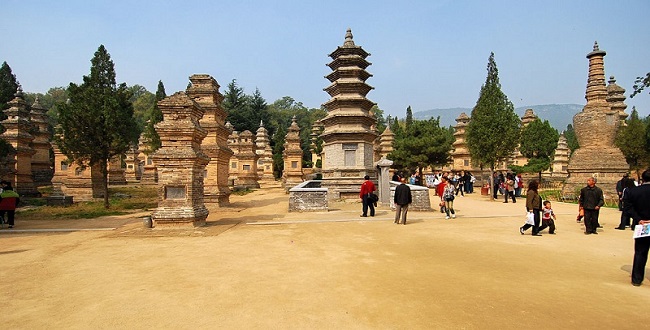
Traditionally Bodhidharma is credited as founder of the martial arts at the Shaolin Temple. However, martial arts historians have shown this legend stems from a 17th-century qigong manual known as the Yijin Jing.
The authenticity of the Yi Jin Jing has been discredited by some historians including Tang Hao, Xu Zhen and Matsuda Ryuchi. This argument is summarized by modern historian Lin Boyuan in his Zhongguo wushu shi:
As for the "Yi Jin Jing" (Muscle Change Classic), a spurious text attributed to Bodhidharma and included in the legend of his transmitting martial arts at the temple, it was written in the Ming dynasty, in 1624, by the Daoist priest Zining of Mt. Tiantai, and falsely attributed to Bodhidharma. Forged prefaces, attributed to the Tang general Li Jing and the Southern Song general Niu Gao were written. They say that, after Bodhidharma faced the wall for nine years at Shaolin temple, he left behind an iron chest; when the monks opened this chest they found the two books "Xi Sui Jing" (Marrow Washing Classic) and "Yi Jin Jing" within. The first book was taken by his disciple Huike, and disappeared; as for the second, "the monks selfishly coveted it, practicing the skills therein, falling into heterodox ways, and losing the correct purpose of cultivating the Real. The Shaolin monks have made some fame for themselves through their fighting skill; this is all due to having obtained this manuscript." Based on this, Bodhidharma was claimed to be the ancestor of Shaolin martial arts. This manuscript is full of errors, absurdities and fantastic claims; it cannot be taken as a legitimate source.
The oldest available copy was published in 1827. The composition of the text itself has been dated to 1624. Even then, the association of Bodhidharma with martial arts only became widespread as a result of the 1904–1907 serialization of the novel The Travels of Lao Ts'an in Illustrated Fiction Magazine:
One of the most recently invented and familiar of the Shaolin historical narratives is a story that claims that the Indian monk Bodhidharma, the supposed founder of Chinese Chan (Zen) Buddhism, introduced boxing into the monastery as a form of exercise around a.d. 525. This story first appeared in a popular novel, The Travels of Lao T’san, published as a series in a literary magazine in 1907. This story was quickly picked up by others and spread rapidly through publication in a popular contemporary boxing manual, Secrets of Shaolin Boxing Methods, and the first Chinese physical culture history published in 1919. As a result, it has enjoyed vast oral circulation and is one of the most “sacred” of the narratives shared within Chinese and Chinese-derived martial arts. That this story is clearly a twentieth-century invention is confirmed by writings going back at least 250 years earlier, which mention both Bodhidharma and martial arts but make no connection between the two.
Other scholars see an earlier connection between Da Mo and the Shaolin Monastery. Sholars generally accept the historicity of Da Mo ( Bodhidharma) who arrived in China around 480. Da Mo (Bodhidharma) and his disciples are said to have lived a spot about a mile from the Shaolin Temple that is now a small nunnery. [ In the sixth century, around 547, The Record of the Buddhist Monasteries says Da Mo visited the area near Mount Song. In 645 The Continuation of the Biographies of Eminent Monks describes him as being active in the Mount Song region. Around 710 Da Mo is identified specifically with the Shaolin Temple (Precious Record of Dharma's Transmission or Chuanfa Baoji) and writes of his sitting facing a wall in meditation for many years. It also speaks of Huikes many trials in his efforts to receive instruction from Da Mo. In the 11th century a (1004) work embellishes Da Mo legends with great detail. A stele inscription at the Shaolin Monastery dated 728 reveals Da Mo residing on Mount Song. Another stele in 798 speaks of Huike seeking instruction from Da Mo. Another engraving dated 1209 depicts the barefoot saint holding a shoe according to the ancient legend of Da Mo. A plethora of thirteen and fourteen century steles feature Da Mo in Various roles. One thirteen century image shows him riding a fragile stalk across the Yangtze River. In 1125 a special temple was constructed in his honor at the Shaolin Monastery.
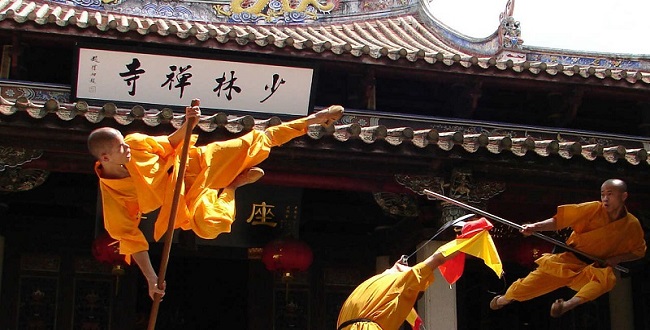
The monastery has been destroyed and rebuilt many times. During the Red Turban Rebellion in the 14th century, bandits ransacked the monastery for its real or supposed valuables, destroying much of the temple and driving the monks away. The monastery was likely abandoned from 1351 or 1356 (the most likely dates for the attack) to at least 1359, when government troops retook Henan. The events of this period would later figure heavily in 16th century legends of the temple's patron saint Vajrapani, with the story being changed to claim a victory for the monks, rather than a defeat.
In 1641, rebel forces led by Li Zicheng sacked the monastery due to the monks' support of the Ming Dynasty and the possible threat they posed to the rebels. This effectively destroyed the temple's fighting force.The temple fell into ruin and was home to only a few monks until the early 18th century, when the government of the Qing Dynasty patronized and restored the temple.
Perhaps the best-known story of the Temple's destruction is that it was destroyed by the Qing government for supposed anti-Qing activities. Variously said to have taken place in 1647 under the Shunzhi Emperor, in 1674, 1677, or 1714 under the Kangxi Emperor, or in 1728 or 1732 under the Yongzheng Emperor, this destruction is also supposed to have helped spread Shaolin martial arts through China by means of the five fugitive monks. Some accounts claim that a supposed southern Shaolin Temple was destroyed instead of, or in addition to, the temple in Henan: Ju Ke, in the Qing bai lei chao (1917), locates this temple in Fujian province. These stories commonly appear in legendary or popular accounts of martial history, and in wuxia fiction.
There is evidence of Shaolin martial arts being exported to Japan in the 18th and 19th centuries. Okinawan Shōrin-ryū karate (小林流), for example, has a name meaning "Small [Shao]lin".[25]Other similarities can be seen in centuries-old Chinese and Japanese martial arts manuals.
In 1928, the warlord Shi Yousan set fire to the monastery, burning it for over 40 days, destroying a significant percent of the buildings, including many manuscripts of the temple library.
The Cultural Revolution launched in 1966 targeted religious orders including the monastery. The five monks who were present at the monastery when the Red Guards attacked were shackled and made to wear placards declaring the crimes charged against them.The monks were jailed after publicly being flogged and paraded through the street as people threw rubbish at them. The government purged Buddhist materials from within the monastery walls, leaving it barren for years.
Martial arts groups from all over the world have made donations for the upkeep of the temple and grounds, and are subsequently honored with carved stones near the entrance of the temple.
According to legend, during the Tang Dynasty, Emperor Taizong granted the Shaolin Temple extra land and special "imperial dispensation" to eat meat, and drink, which would make Shaolin the only temple in China that did not prohibit alcohol, although this practice has ceased today. This legend is not corroborated in any period documents, such as the Shaolin Stele erected in 728. The stele does not list any such imperial dispensation as reward for the monks' assistance during the campaign against Wang Shichong, only land and a water mill are granted.
In the past, many have tried to capitalise on Shaolin Monastery fame by building their own schools on Mount Song. However, the Chinese government eventually outlawed this; the schools were moved to the nearby towns. However, as of 2010, the Ta Gou kung fu school, one of the largest martial arts schools in China, owns and practises on land below Shaolin Temple. Current 31st Grand Master of the fighting monks is Shi De Yang, a disciple of the late abbot Shi Suxi.
A dharma gathering was held from August 19 to August 20, 1999, in Shaolin Monastery for Shi Yongxin's assumption of office as abbot. In March 2006, Russian President Vladimir Putin became the first foreign leader to visit the monastery. In 2007, the Chinese government partially lifted the 300-year ban of the Jieba. The Jieba is the ancient ceremony of the nine marks, which are burned onto the head with sticks of incense. The ban was partially lifted only for those who were mentally and physically prepared to participate in the tradition.
Shaolin temple buildings
The temple's inside area is 160x300 meters, that is, 57,600 square meters. It has 7 main halls on the axis and 7 other halls around, with several yards around the halls. The temple structure includes:
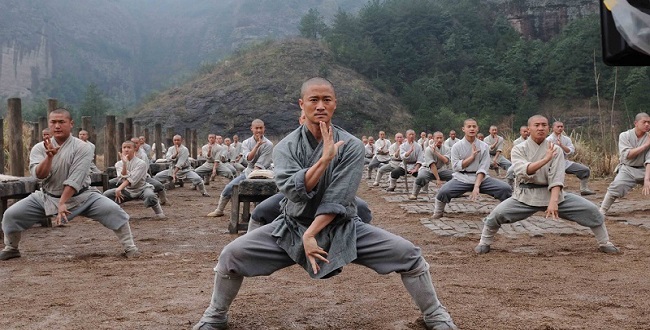
A mural painting in the temple (early 19th century)Shaolin Monastery Stele on Mount Song (皇唐嵩岳少林寺碑), erected in 728 ADA tree within the Shaolin Monastery used by the monks to practice finger-punchingMountain Gate (山门; shan men): (built 1735; The entrance tablet written with golden characters "Shaolin Temple" (少林寺; shao lin si) in black background by Emperor Kangxi of Qing dynasty in 1704).
Forest of Steles (碑林; bei lin)
Ciyun Hall (慈雲堂; ci yun tang): (built 1686; changed 1735; reconstructed 1984). It includes Corridor of Steles (碑廊; bei lang), which has 124 stone tablets of various dynasties since the Northern Qi dynasty (550-570).
West Arrival Hall (西来堂; xi lai tang) aka Kung fu Hall (锤谱堂; chui pu tang): (built 1984).
Heavenly Kings (Devaraja) Palace Hall (天王殿; tian wang dian): (built in Yuan dynasty; repaired in Ming,Qing dynasties).
Bell Tower (钟楼; zhong lou): (built 1345; reconstructed 1994; the bell was built in 1204).
Drum Tower (鼓楼; gu lou): (built 1300; reconstructed 1996).
Kimnara Palace Hall (紧那罗殿; jin na luo dian): (reconstructed 1982).
Six Patriarchs Hall (六祖堂; liu zu tang)Mahavira Palace Hall (大雄宝殿; da xiong bao dian) aka Main Hall or Great Hall : (built maybe 1169; reconstructed 1985).
Dining Hall: (built in Tang dynasty; reconstructed 1995).
Sutra Room
Dhyana Halls: (reconstructed 1981).
Guest Reception Hall
Dharma (Sermon) Hall (法堂; fa tang) aka Scripture Room (藏经阁; zang jing ge): (reconstructed 1993).
East & West Guests Rooms
Abbot's Room (方丈室; fang zhang shi): (built in early Ming dynasty).
Standing in Snow Pavilion (立雪亭; li xue ting) aka Bodhidharma Bower (达摩庭; da mo ting): (reconstructed 1983).
Manjusri Palace Hall (wen shu dian): (reconstructed 1983).
Samantabhadra Palace Hall
White Robe (Avalokitesvara) Palace Hall (白衣殿; bai yi (Guan yin) dian) aka Kung fu Hall (quan pu dian): (built in Qing dynasty).
Ksitigarbha Palace Hall (地臧殿; di zang dian): (built in early Qing dynasty; reconstructed 1979).
1000 Buddha Palace Hall (千佛殿; qian fo dian) aka Pilu Pavilion (毗庐阁; pi lu ge): (built 1588; repaired 1639,1776).
Ordination Platform : (built 2006).
Monks' Rooms
Shaolin Pharmacy Bureau: (built 1217; reconstructed 2004).
Bodhidharma Pavilion (chu zu an): (built first in Song dynasty)Bodhidharma CaveForest of Pagodas Yard (塔林院; ta lin yuan): (built before 791). It has 240 tomb pagodas of various sizes from the Tang, Song, Jin, Yuan, Ming, and Qing dynasties (618-1911).
The Pagoda forest (wide view)
The Pagoda forest (close view), located about 300 meters west of the Shaolin Monastery in HenanShaolin Temple Wushu GuanSouthern and Northern Shaolin MonasteriesA number of traditions make reference to a Southern Shaolin Monastery located in Fujian province. There has also been a Northern Shaolin monastery in northern China. Associated with stories of the supposed burning of Shaolin by the Qing government and with the tales of the Five Elders, this temple, sometimes known by the name Changlin, is often claimed to have been either the target of Qing forces or a place of refuge for monks displaced by attacks on the Shaolin Monastery in Henan. Besides the debate over the historicity of the Qing-era destruction, it is currently unknown whether there was a true southern temple, with several locations in Fujian given as the location for the monastery. Fujian does have a historic monastery called Changlin, and a monastery referred to as a "Shaolin cloister" has existed in Fuqing, Fujian, since the Song Dynasty, but whether these have an actual connection to the Henan monastery or a martial tradition is still unknown. The Southern Temple has been a popular subject of wuxia fiction, first appearing in the 1893 novel Shengchao Ding Sheng Wannian Qing, where it is attacked by the Qianlong Emperor with the help of the White Eyebrow Taoist.
Travel Map
Recommend Tour
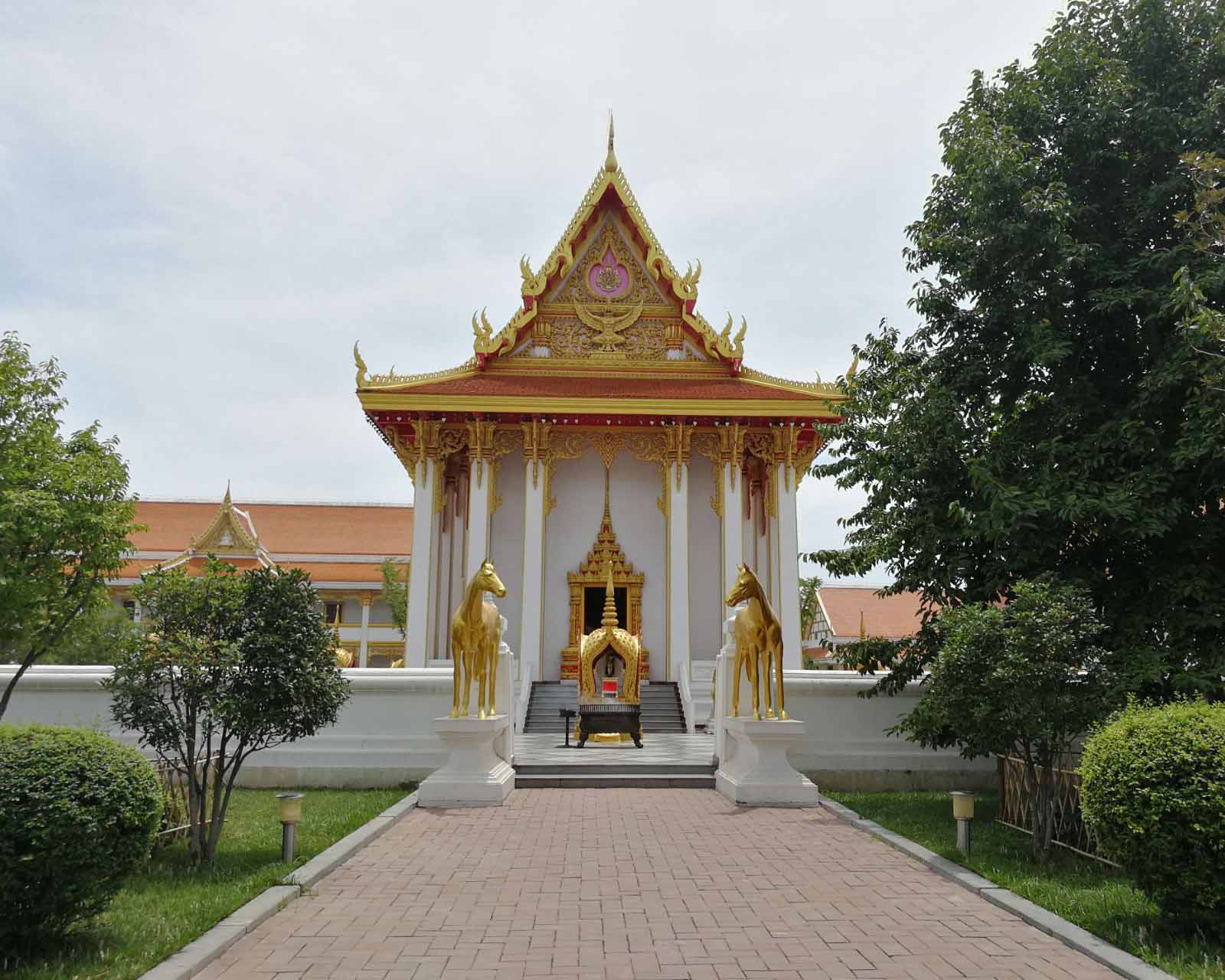
5 Days highlights China Tour of Xian-Luoyang-Shaolin Monastery Chinese Kungfu
5days
Once the terminus of the Silk Road and a melting pot of cultures, religion and home to emperors, monks, merchants and warriors, the glory days of Xian are unending. Visit the most famous attractions of Xian as well as Luoyang over this 5 days trip on a private tour with a professional guide and immerse yourself in the best-preserved "City Wall" that still remains intact, the UNESCO world heritage "Terracotta Warriors and Horses Museum" and the leader in the Buddhist world "Great Wild Goose Pagoda", among other must-see attractions before discovering the rich cultural heritage of Luoyang.


3 Days Discovery Tour to Luoyang and Mount Song
3days
Henan is the craddle of Chinese civilization and plays an important role in China's history with over 5,000 years of history. It is one out of the eight great ancient capitals in China with numerous historical and cultural heritage sites. Chariot and Horse pits, the White Horse Temple, the Longmen Grottoes and Shaolin Monastery are all quintessence of traditional Chinese culture and histrorical relics.

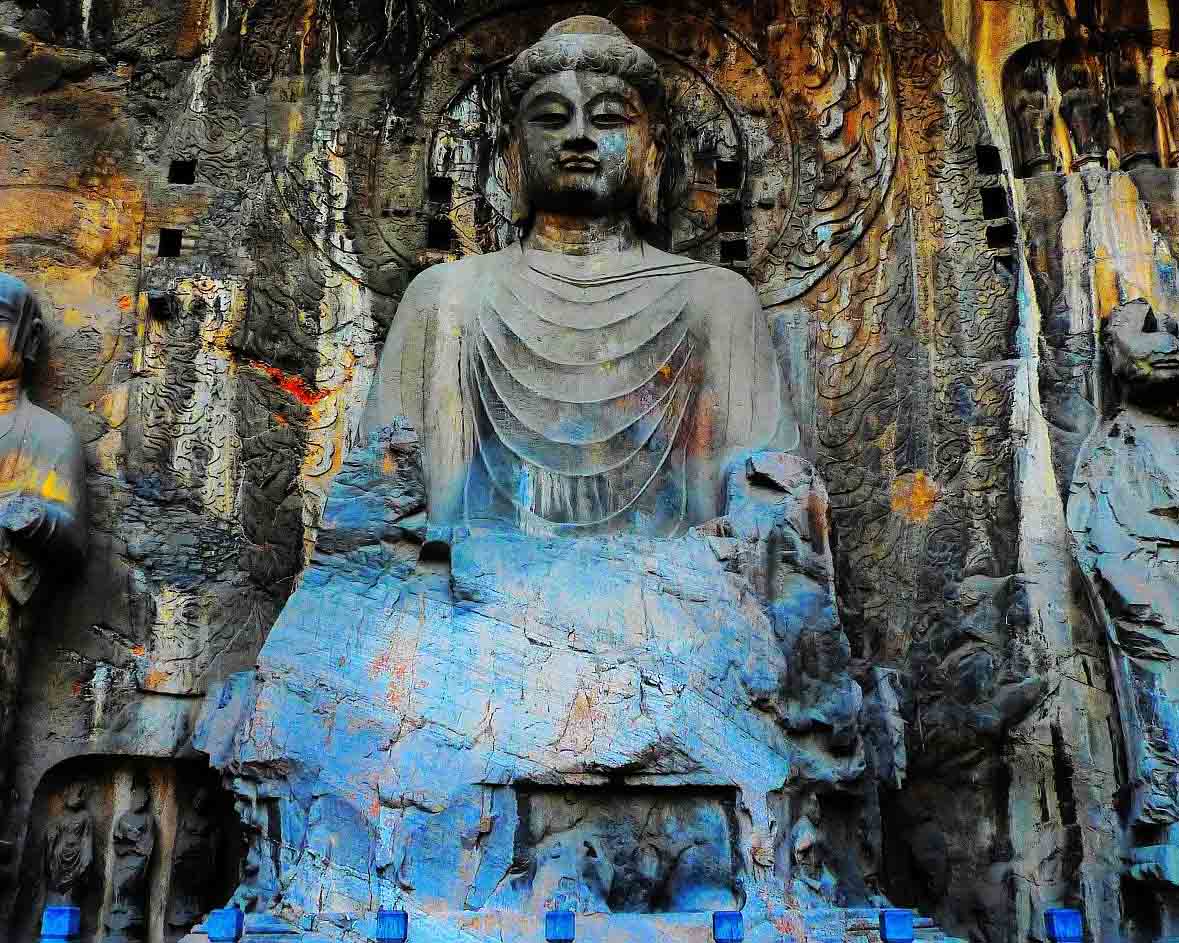
11 Days China Tour of Beijing, Xian, Shanghai with Chinese Shaolin Kungfu
11days
This 11 days tour makes it possible for you to ingeniously visit the most famous areas in China. In Beijing, you see Tiananmen Square, Forbidden City, Temple of Heaven, Summer Palace, Badaling Great Wall and Hutong areas. In Luoyang, you explore the Mount Song, Shaolin Monastery, Longmen Grottoes and White Horse Temple. In Xian, you visit Xian City Wall, Terracotta Warriors, Great Wild Goose Pagoda, and Shaanxi History Museum. In modern Shanghai, you discover Yu Garden, Chenghuang Temple, Bund, Old Street, Bund and Nanjing Road. Besides, experience the rapid development of China by taking high-speed railway.


2 Days Luoyang Essence Tour with Longmen Grottoes, Shaolin Monastery and Other Highlights
2days
Join this private day tour to explore the most important historical highlights in Luoyang, experience Chariot and Horse Pits, components of ancient weapon for conquering the rivals, marvel at the magnificent Longmen Grottoes, one of the largest Grottoes in China, stroll around the halls and pavilions of the White Horse Temple, considered as the birthplace of Chinese Buddhism; Shaolin Monastery, the cradle of Chinese Kungfu; Shenzhou Peony Garden, quintessence of local culture. A Lunch, a private guide and round trip hotel transfers are all included in the package.


1 Day Luoyang Highlights Tour with Shaolin Monastery, Longmen Grottoes, Shenzhou Peony Garden
1days
A trip to Henan province will not only feast your eyes, but also satisfy your appetite for adventure. With numerous sites and beautiful landscape, tour the different attractions and special themes. Appreciate the treasure house of ancient Buddhist cave art at the Longmen Grottoes; experience the Kung Fu legends in Shaolin Temple; and pay a visit to the enchanting Shenzhou Peony Garden. Getting into the great natural and historical scenery to seek unique oriental culture at the best price out there will surely create lifetime memories!

Answers to questions
 Marcopolo@chinatoursnet.com
Marcopolo@chinatoursnet.com


Phone:+86-13683536536
WhatsApp/iMessage:+86-13683536536
WeChat:chinatoursnet
Shaolin Monastery Photos
.png)
.png)
.png)
.png)
.png)